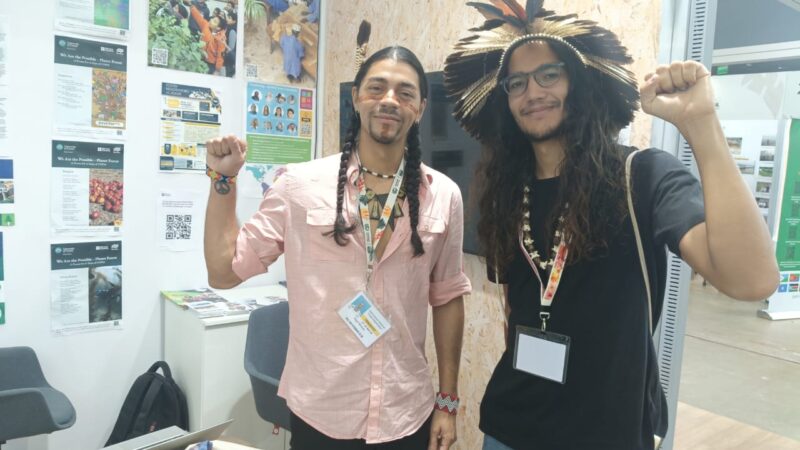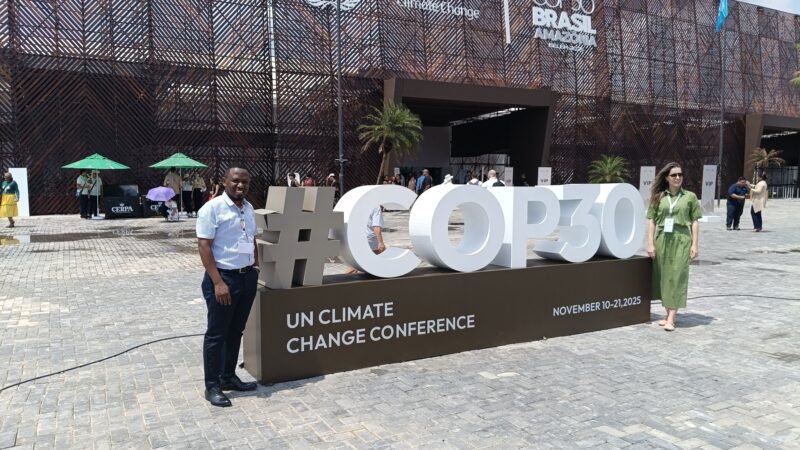
Heritage belongs in every climate conversation: Reflections from the ‘Withstanding Change’ exhibition
December 17, 2025
A new blog by Dr. Zakiya McKenzie, Programme Manager, RISE and Senior Research Associate, University of Bristol.
At the end of June, some members of INTO’s RISE community gathered in Bristol for an in-person meeting, a chance to step away from our screens, connect with colleagues from across the network and root our conversations about plants and public history firmly in place. Over the week we explored historic sites, swapped ideas, shared meals and imagined new ways to engage communities and visitors at heritage sites connected to enslavement.
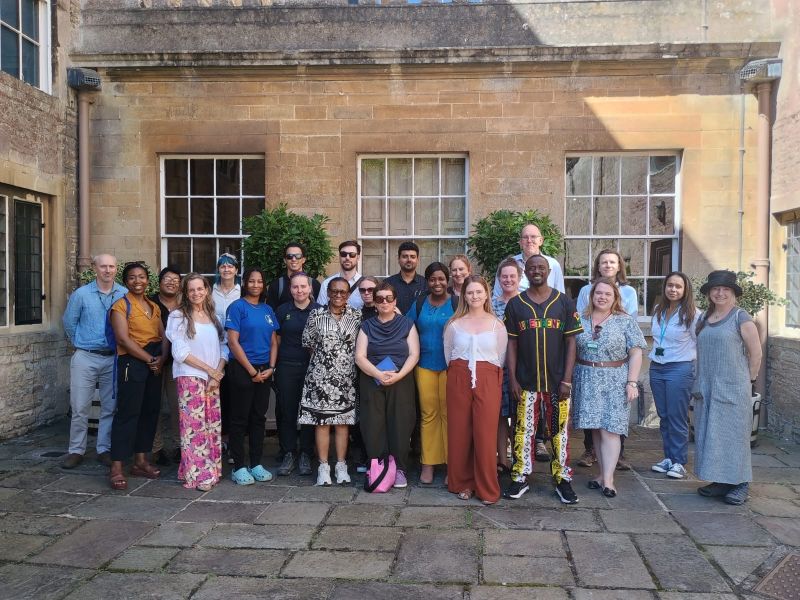
On 30 June, our group travelled just outside Bristol to the National Trust’s Dyrham Park, a baroque country house set in an ancient deer park which welcomes more than 250,000 visitors a year. Dyrham was once the home of William Blathwayt, a leading seventeenth century colonial official and a key figure in Britain’s imperial expansion. Its connections to Britain’s Atlantic slave economy are still coming to light.
We spent the morning with the house team, learning about the National Trust’s model for opening and interpreting historic houses. We discussed who visits sites like Dyrham Park, what they seek, and how volunteers and members shape the life of a place.
Over lunch, conversations turned to how histories of enslavement and empire can be meaningfully addressed at sites that did not host plantations or large enslaved workforces themselves, but whose owners and wealth were deeply entangled with enslavement. William Blathwayt did not directly invest in slave ships or own plantations, and he never set foot in the Americas during his lifetime.
But his work as a powerful colonial administrator – overseeing plantation revenues, regulating trade, and shaping imperial policy – helped build and maintain the systems that enabled Britain’s Atlantic slave economy to flourish.
The wealth and status behind houses like Dyrham Park were deeply bound up in these structures, even when enslaved labour remained out of sight.
A highlight of our visit was seeing a remarkable new addition to the National Trust’s collection at Dyrham – a panoramic painting of the port of Bridgetown, thought to be one of the earliest painted depictions of Barbados.
The painting once belonged to William Blathwayt and had left the house with the last Blathwayt to own Dyrham Park. It was recently acquired by the National Trust and painstakingly conserved at Knole’s Royal Oak Foundation Conservation Studio, returning to Dyrham just weeks before our visit. Almost 500 hours of technical analysis and conservation work have contributed to the understanding of the city, harbour, and landscape presented.
The painting is vivid evidence of Barbados’s centrality as Britain’s wealthiest Caribbean colony in the seventeenth century, but starkly absent are the enslaved Africans whose labour sustained this prosperity.
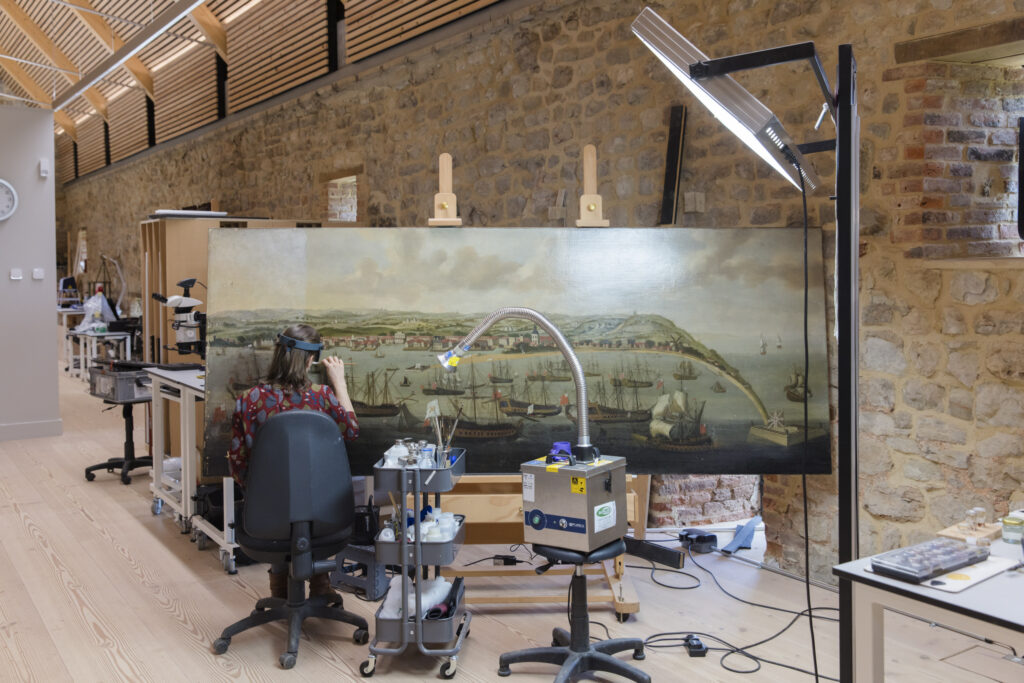
Conservation work on ‘A view of the port of Bridgetown, Barbados with extensive shipping’, an oil painting from Dyrham Park, in The Royal Oak Foundation Conservation Studio, Knole, Kent
Tuesday brought us together at the University of Bristol for a day of lively workshopping. We dug into research needs and opportunities for the RISE network, considering questions such as where are the archives and collections that hold the stories we need and what creative or community-based methods can help us interpret histories that remain hidden or are hard to tell.
The conversation flowed into a rich discussion on how plants histories and green heritage spaces might help surface stories of forced labour, botanical exchange, and resistance.
‘Bristol, Bristol’
A welcome surprise that day was a visit from former Bristol City Poet Miles Chambers who delivered our delicious lunch from his Agnes Spencer Jamaican caterers. In an impromptu moment, Miles treated us to a powerful recitation of his poem ‘Bristol, Bristol’, which stirred reflection and sparked conversation among RISE delegates about the city’s entangled past. This set the tone and offered some context for our walk around the Harbourside the following day.
Introducing AI
We were also introduced to an Artificial Intelligence Frederick Douglass model, a thought-provoking presentation by Selvin Backert, Education Specialist at the Museum of African American History: Boston and Nantucket, who brought the voice of the famed abolitionist into our 21st-century conversation about memory, technology and education.
This AI tool is trained on Frederick Douglass’s speeches and writings, allowing people today to pose questions and hear how he might have responded. One RISE member asked what Douglass might have thought of reggae music.
The AI replied that although the real Douglass never heard reggae in his lifetime, he knew well the power of music as a force of struggle and resistance, recalling the hymns and freedom songs sung by enslaved people in the Americas. This moment led to discussion about how new advances can be used in interpretation in heritage spaces.
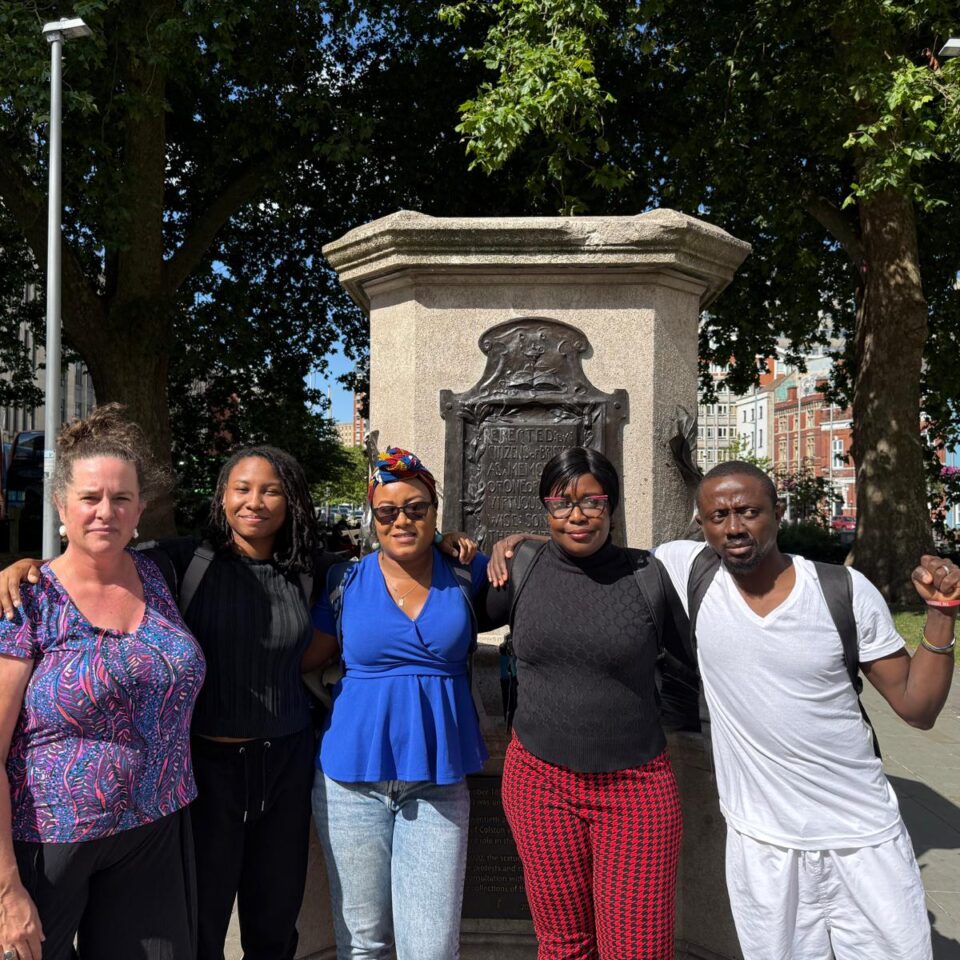
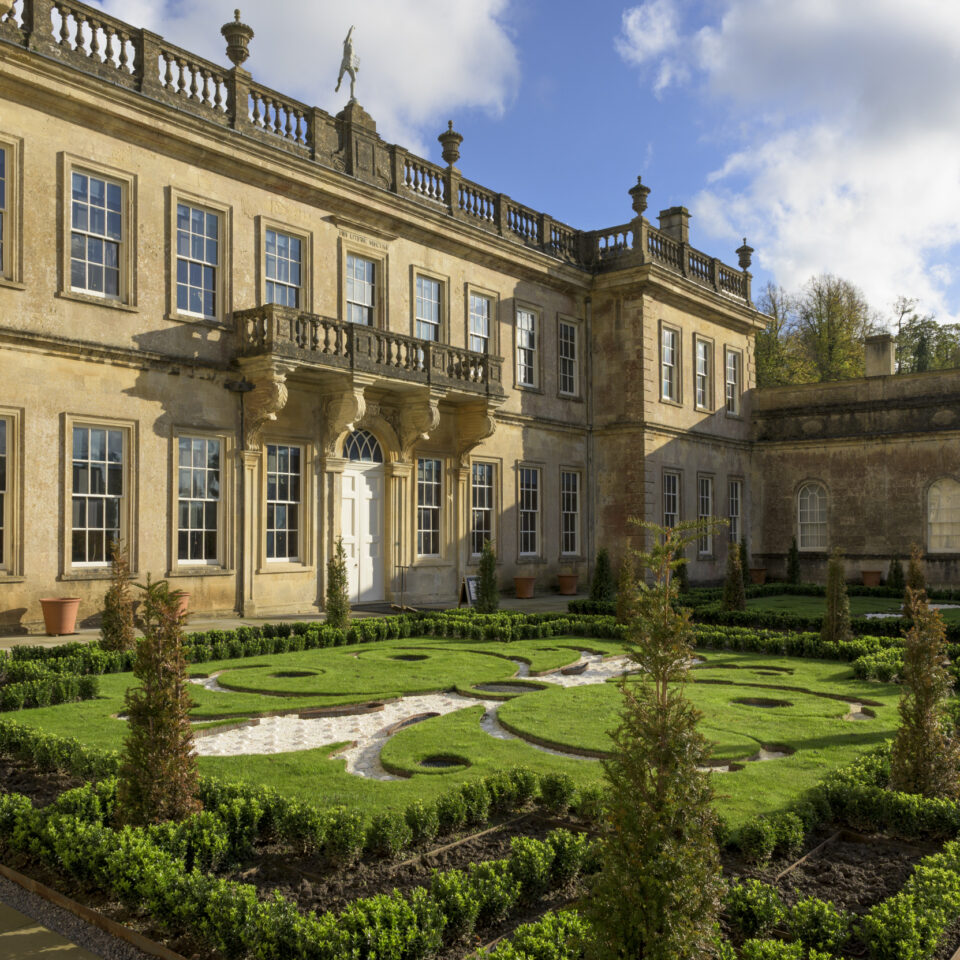
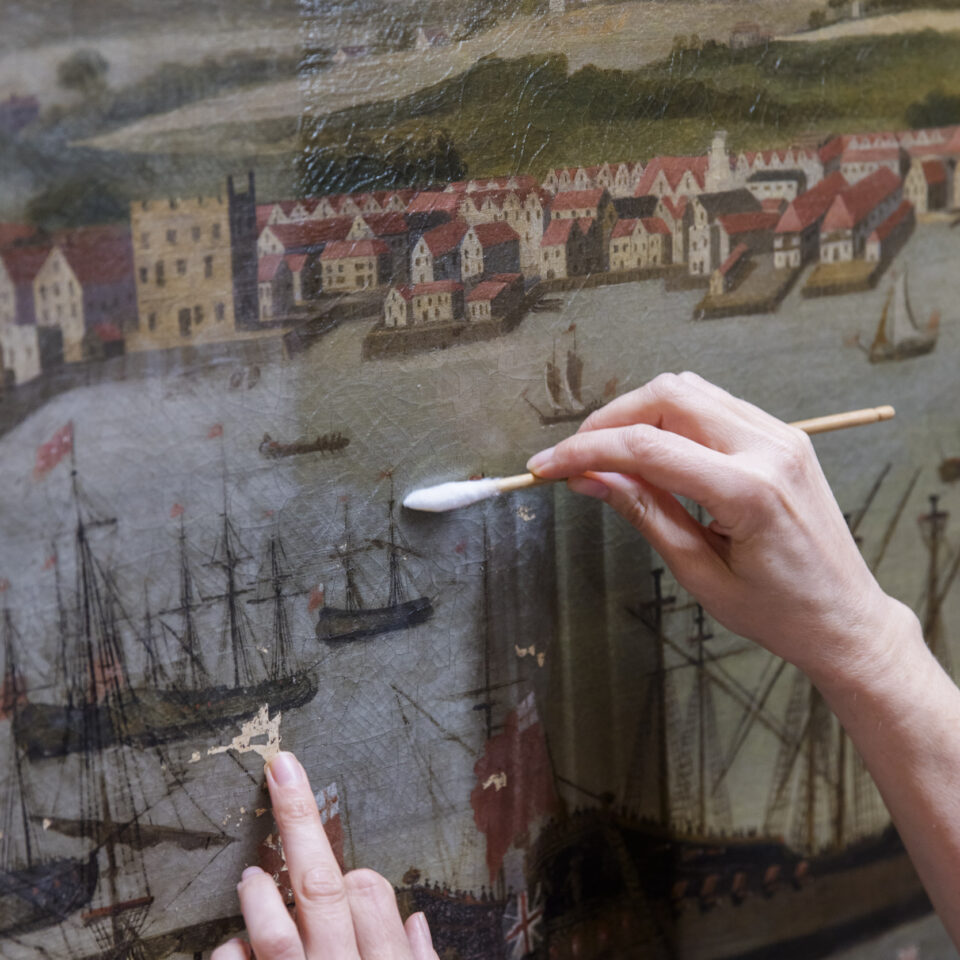
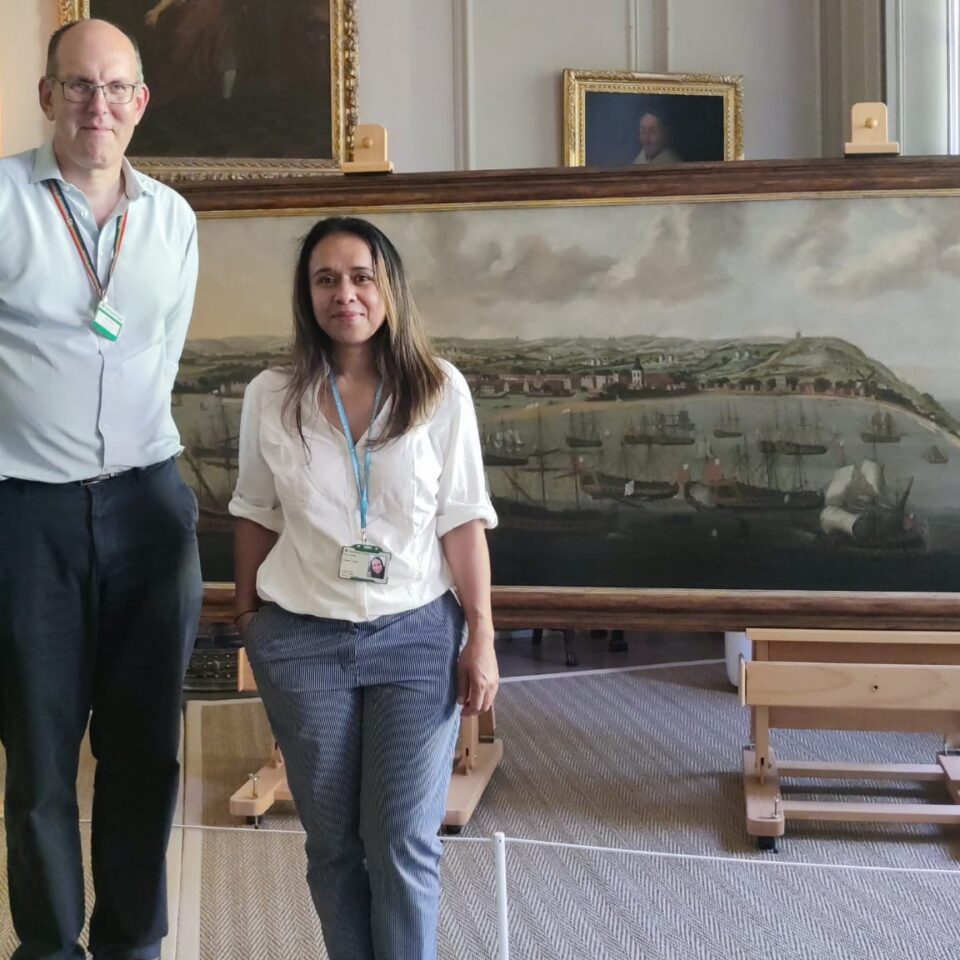
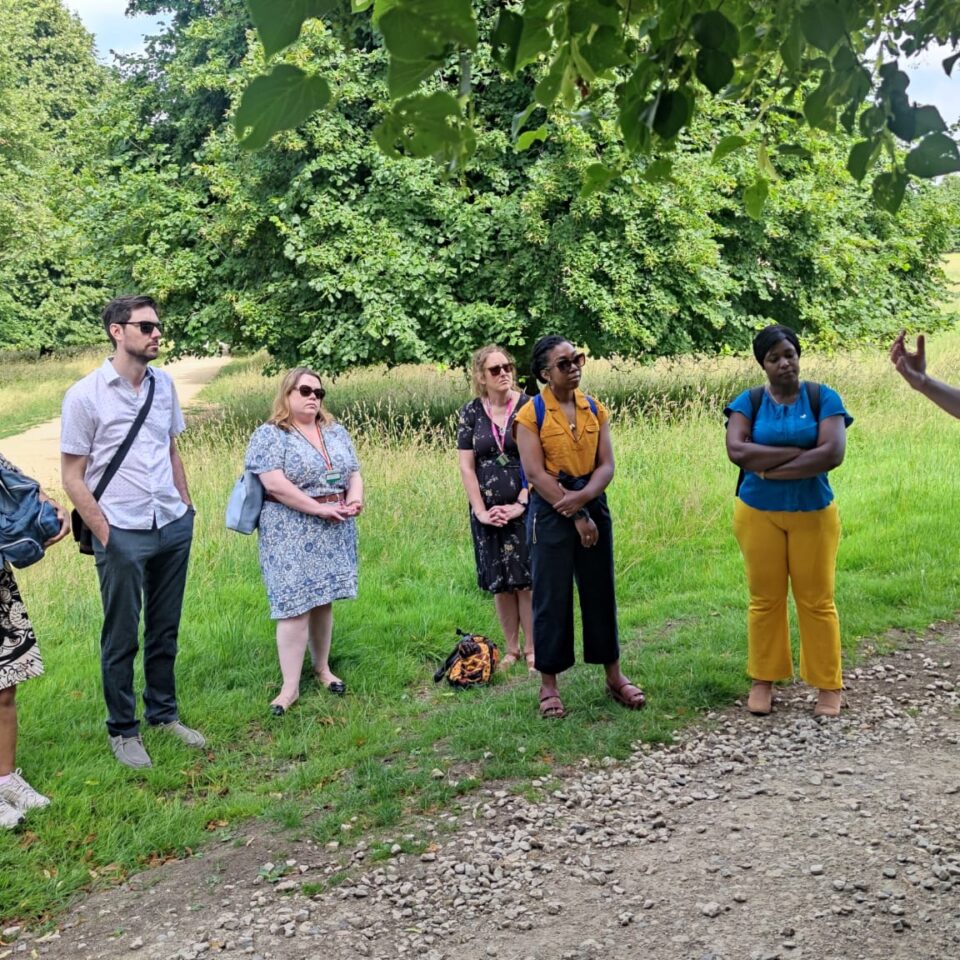
On Wednesday, we joined the ‘Society for Caribbean Studies conference’ at the University of Bristol, where several of us contributed to a panel discussion on Re-imagining Sites of Enslavement: Heritage Roundtable.
Chaired by Jessica Moody and Zakiya McKenzie, the panel brought together perspectives from Barbados, Bermuda, Jamaica, Sierra Leone, and the USA. We explored how sites with ties to enslavement can navigate interpretation, community engagement, and care for difficult histories, core questions for the RISE network.
We had very interesting conversations at the RISE panel discussion at the 48th Annual Society for Caribbean Studies Conference. Thanks Dr. Jessica Moody and Dr. Zakiya McKenzie for steering the panel. It has been a fascinating few days of discussing heritage interpretations and the potential of our global network.
Back in the city, a few of us peeled off from the conference for a few hours to explore the city. Beginning outside the University of Bristol’s Wills Memorial Building, we made our way to the waterfront, tracing the outlines of Bristol’s port history and its pivotal role in the Atlantic enslavement economy.
At Pero’s Bridge (named after Pero Jones, an enslaved man brought to Bristol from Nevis in 1783), we reflected on how the city’s streets and monuments continue to speak about Britain’s entanglements with slavery. We paused at the empty plinth that once held the statue of Edward Colston, a slave trader whose name and legacy have become central to Bristol’s public reckoning with its past.
We finished in Broadmead, where street art, statues, and the everyday urban fabric sparked new ideas for how sites across our network might approach contested histories in their own contexts.
Inspiration and connection
These few days reminded us that our work is as much about relationships as it is about research and development. Through RISE, we are learning together how to care for sites that carry difficult histories, we are sharing knowledge across borders and building new ways of telling stories that matter to our communities today.
We came away from our time in Bristol inspired by the conversations sparked in historic houses, on city streets, and around shared meals. We look forward to deepening these connections as we move into the next phase of the programme.
These narratives are not confined to one geography. Much of Zanzibar’s experience of slavery is buried in archives and embedded in local memory, passed down through generations. These stories remain to be uncovered, unhidden, and woven into the heritage values and interpretation of historic sites across the region.

December 17, 2025
